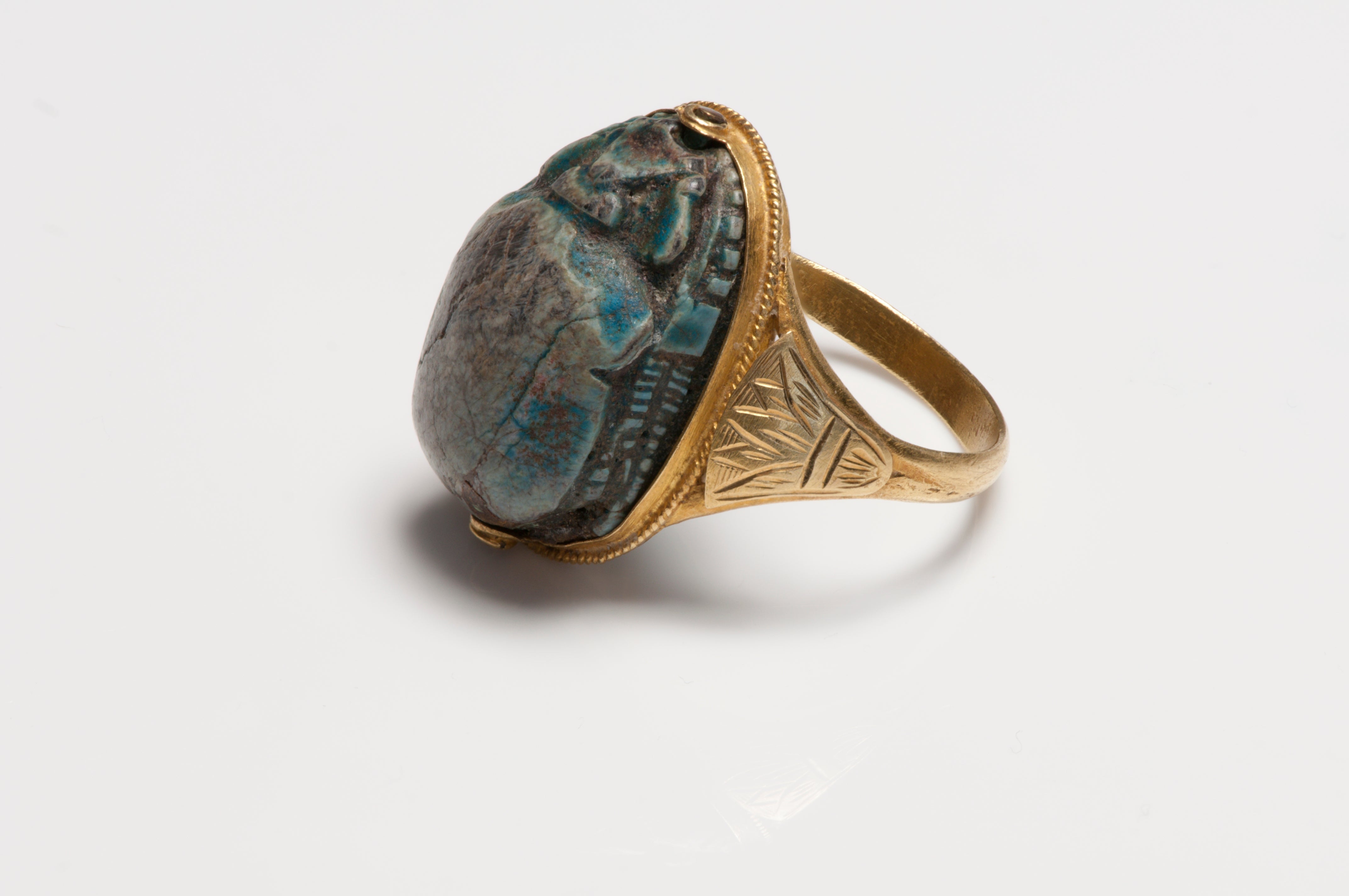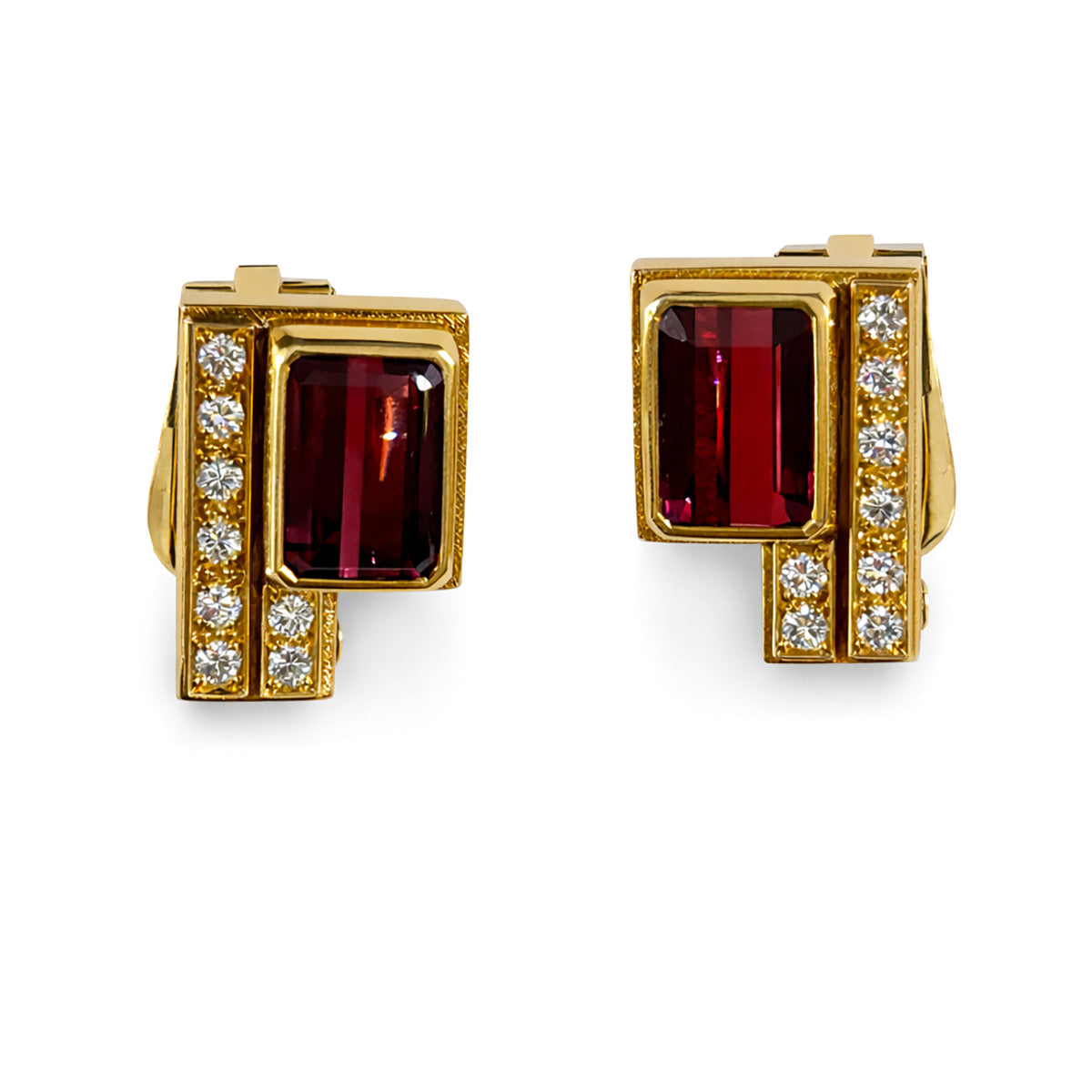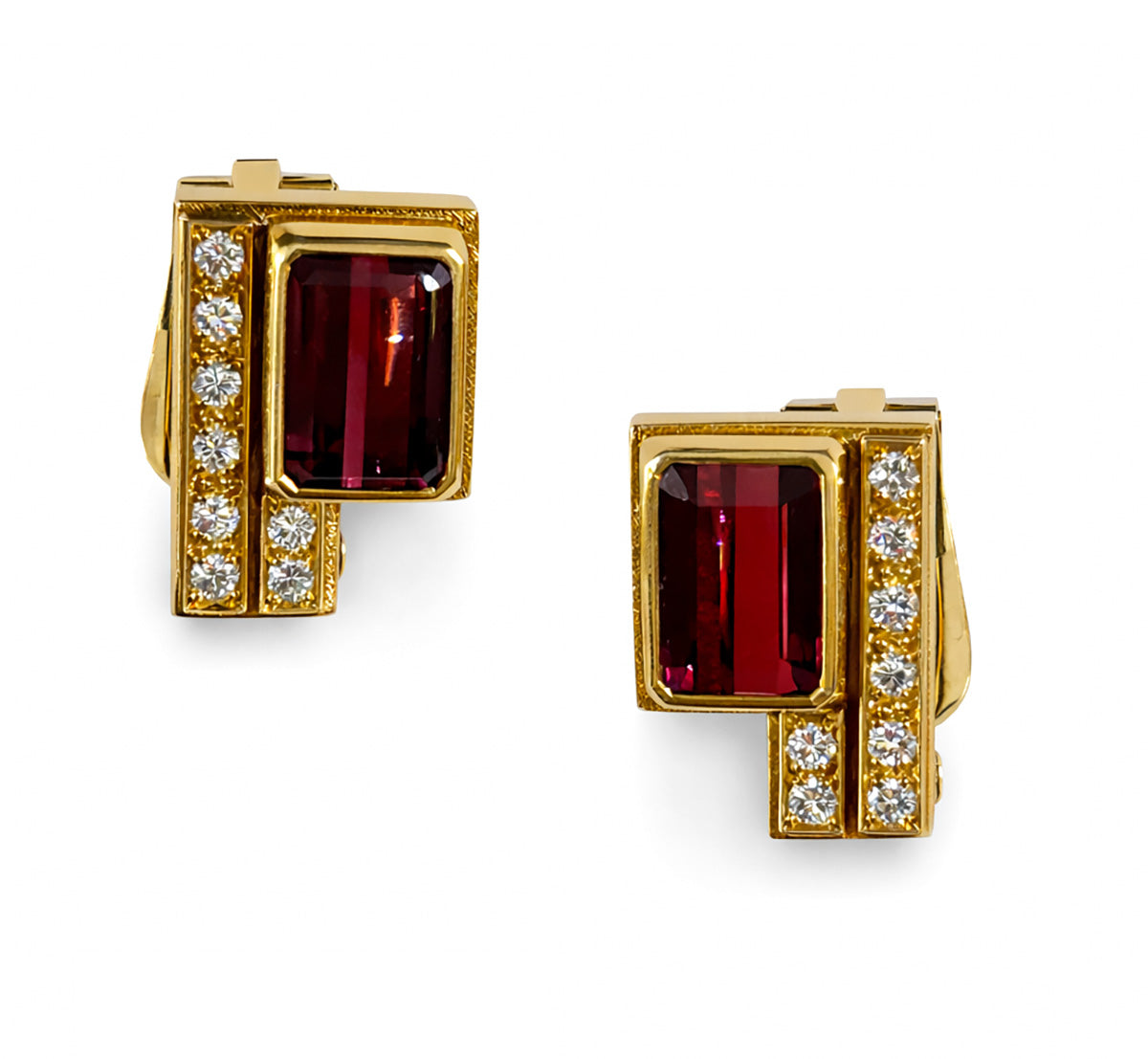
Diamonds: The Importance Of The 4Cs
The Gem Institute of America founder Robert M. Shipley came up with the name "4Cs" in the early 1940s. It's a straightforward but innovative idea.
Professionalizing the American jewelry industry was something that Shipley, a former retail jeweler, was fervently committed to.
The 4Cs are a mnemonic method that Shipley created to help his students recall the four characteristics of a faceted diamond: color, clarity, cut, and carat weight.
His continuous advocacy for increased understanding, ethics, and standards regarding the purchase and sale of gems led to the establishment of the Gem Institute of America (GIA), which offers official training to jewelers.
4Cs – The Journey
Professionalizing the American jewelry industry was something that Shipley, a former retail jeweler, was fervently committed to.
The 4Cs are a mnemonic method that Shipley created to help his students recall the four characteristics of a faceted diamond: color, clarity, cut, and carat weight.
His continuous advocacy for increased understanding, ethics, and standards regarding the purchase and sale of gems led to the establishment of the Gem Institute of America (GIA), which offers official training to jewelers.
4Cs – The Journey
When discussing these four variables, diamond merchants have historically employed a wide range of terminology, most of which are general in nature, and seldom are they consistent.
The most colorless diamonds were referred to as river or water diamonds. They described diamonds as "without flaws" or "with imperfections" in order to explain clarity. Cut was characterized as either "made poorly" or "made well."
Because of this, jewelers found it extremely challenging to convey those valuable aspects to their clients or to help them remember them. From the 1500s to now, the only word regularly used to represent weight is carat.
Under Shipley's guidance, the name "4Cs" spread across the American gem industry through talks, advertising campaigns, and GIA teaching programs. They were also included into the global nomenclature in a matter of decades.
President Richard T. Liddicoat (affectionately known as RTL), who succeeded Shipley, carried out additional research and developed the GIA D-to-Z Color Scale and GIA Clarity Scale for diamonds, which are currently used worldwide. Additionally, he developed the scientific processes and methodologies for impartially assessing a diamond's quality, according to 4cs.gia.edu.
Also, the development of the Diamond 4Cs and the GIA International Diamond Grading SystemTM meant two very significant things: buyers could now know exactly what they are purchasing, and diamond quality could be expressed in a global language.
Color
Although colorless diamonds are extremely uncommon, many people believe that diamonds are colorless.
The color of a diamond was previously described by a perplexing alphabet soup prior to the 4Cs and RTL's contributions.
Retailers utilized competing systems with descriptors like "A", "AA", and "AAA" to convey color quality to customers.
Regarding what qualified as an "A" rating, there was almost no consensus among the firms.
In addition to the phrases listed above, the majority of diamond dealers also used terms like top Wesselton and rarest white.
The GIA has been developing a precise, impartial color-grading methodology for colorless to light yellow diamonds since the 1930s. Under RTL's guidance, GIA unveiled the GIA D-to-Z color scale in 1953.
The letter "D" was specifically chosen for the top grade (colorless) since it had negative associations and was therefore unlikely to be misunderstood or abused.
Color grades are defined as follows:
Color grades are defined as follows:
- D E F: Colorless. These are the rarest color grades of all.
- G H I J: Near Colorless. When set, it might be challenging to discern from colorless.
- K L M: Faint Color
- N-R: Very Light Color
- S-Z: Light Color
- G H I J: Near Colorless. When set, it might be challenging to discern from colorless.
- K L M: Faint Color
- N-R: Very Light Color
- S-Z: Light Color
Clarity
Under a microscope, a diamond's landscape appears to come to life. The majority of diamonds include surface imperfections called blemishes and internal characteristics called inclusions.
These collectively are referred to as clarity attributes, and they have an impact on a polished gem's optical qualities.
These collectively are referred to as clarity attributes, and they have an impact on a polished gem's optical qualities.
Clarity is a measure of diamond purity.
There are six categories on the GIA Diamond Clarity Scale, some of which are divided, for a total of eleven distinct grades:
- Flawless (FL) Not even a hint of imperfections or flaws is apparent at 10x magnification
- Internally Flawless (IF) No inclusions visible under 10x magnification
- Very, Very Slightly Included (VVS1 and VVS2) Inclusions are so tiny that even with a 10x magnification, a trained grader would have trouble seeing them.
- Very Slightly Included (VS1 and VS2) Even at 10x magnification, inclusions are difficult to see but are considered insignificant.
- Slightly Included (SI1 and SI2) Inclusions are visible under 10x magnification.
- Included (I1, I2, and I3) Under a 10x magnification, inclusions are clearly visible, potentially compromising clarity and brightness.
Also, there is an unofficial clarity grade: SI3
SI3 is a relatively new type of clarity, which was developed to reduce the gap between SI2 and I1. Diamonds that fall into SI3 have graded inclusions, which are very, very difficult to detect, and in most cases are not visible to the naked eye at all.
The Cut
The cut of a diamond is the only thing that humans can do to enhance its beauty and brightness.
Cut, rather than shape, describes the general size and smoothness of a polished gem. This matters because it has an impact on a diamond's dazzling quality.
The cut is also the most intricate and challenging to evaluate technically of all the diamond 4Cs. The GIA computes the proportions of those facets that affect the diamond's face-up look in order to determine the cut grade of the standard round brilliant diamond, the form that predominates in most diamond jewelry.
With the help of these proportions, GIA is able to determine the ideal cut for a diamond by examining how well a diamond combines light to produce desired visual effects, like: fire, scintillation, and brilliance.
The brightness produced by all of the white light reflections from the diamond's interior and surface is known as brilliance.
The color flashes that appear when you rock the diamond back and forth are called fire, sometimes referred to as dispersion. This is caused by the stone's internal light refraction, which functions similarly to a prism.
The cut of a diamond is the only thing that humans can do to enhance its beauty and brightness.
Cut, rather than shape, describes the general size and smoothness of a polished gem. This matters because it has an impact on a diamond's dazzling quality.
The cut is also the most intricate and challenging to evaluate technically of all the diamond 4Cs. The GIA computes the proportions of those facets that affect the diamond's face-up look in order to determine the cut grade of the standard round brilliant diamond, the form that predominates in most diamond jewelry.
With the help of these proportions, GIA is able to determine the ideal cut for a diamond by examining how well a diamond combines light to produce desired visual effects, like: fire, scintillation, and brilliance.
The brightness produced by all of the white light reflections from the diamond's interior and surface is known as brilliance.
The color flashes that appear when you rock the diamond back and forth are called fire, sometimes referred to as dispersion. This is caused by the stone's internal light refraction, which functions similarly to a prism.
The light bursts you see when the diamond or observer moves are known as scintillation.
GIA’s cut scale is: Excellent, Very Good, Good, Fair, and Poor.
GIA’s cut scale is: Excellent, Very Good, Good, Fair, and Poor.
Carat Weight
The carat is a measure of weight, not size. Diamonds are actually valued in terms of their weight, not in terms of their size. The actual size of a diamond can be described in millimeters.
One carat is divided into 100 points - a diamond that is ½ of a carat is also 50 points. Carat weight affects the price of a diamond more than any other factor in the 4 "C's."
Larger diamonds are discovered more rarely than smaller diamonds, which means that larger diamonds are rare and have a higher value. For this reason, the price of a diamond increases exponentially with its size.
A diamond does not appear larger just because it weighs more. Both the quality of the cut and the perception of size are influenced by the diameter across the top of the diamond, which is the visible portion of the stone when it is set.
Larger-looking stones appear to have well-proportioned cuts because they reflect more light. Additionally, take into account the diamond's size in relation to the finger; larger diamonds are seen in smaller ring sizes.
4Cs Framework
In order to create grading standards that yield reliable, consistent findings, GIA has applied the most recent scientific discoveries.
This has completely transformed the jewelry industry. The 4Cs framework has revolutionized the process of determining and communicating diamond quality, which in turn has affected the buying and selling of diamonds.
The GIA laboratory adheres closely to these criteria at all of its facilities across the globe. They make it possible for GIA to provide impartial, reliable diamond grading results wherever in the globe.
While other laboratories throughout the world have adopted the language created by the GIA, it is crucial to remember that only the GIA laboratory has the specialized tools and processes needed to grade diamonds in accordance with these standards.
Larger-looking stones appear to have well-proportioned cuts because they reflect more light. Additionally, take into account the diamond's size in relation to the finger; larger diamonds are seen in smaller ring sizes.
4Cs Framework
In order to create grading standards that yield reliable, consistent findings, GIA has applied the most recent scientific discoveries.
This has completely transformed the jewelry industry. The 4Cs framework has revolutionized the process of determining and communicating diamond quality, which in turn has affected the buying and selling of diamonds.
The GIA laboratory adheres closely to these criteria at all of its facilities across the globe. They make it possible for GIA to provide impartial, reliable diamond grading results wherever in the globe.
While other laboratories throughout the world have adopted the language created by the GIA, it is crucial to remember that only the GIA laboratory has the specialized tools and processes needed to grade diamonds in accordance with these standards.


















